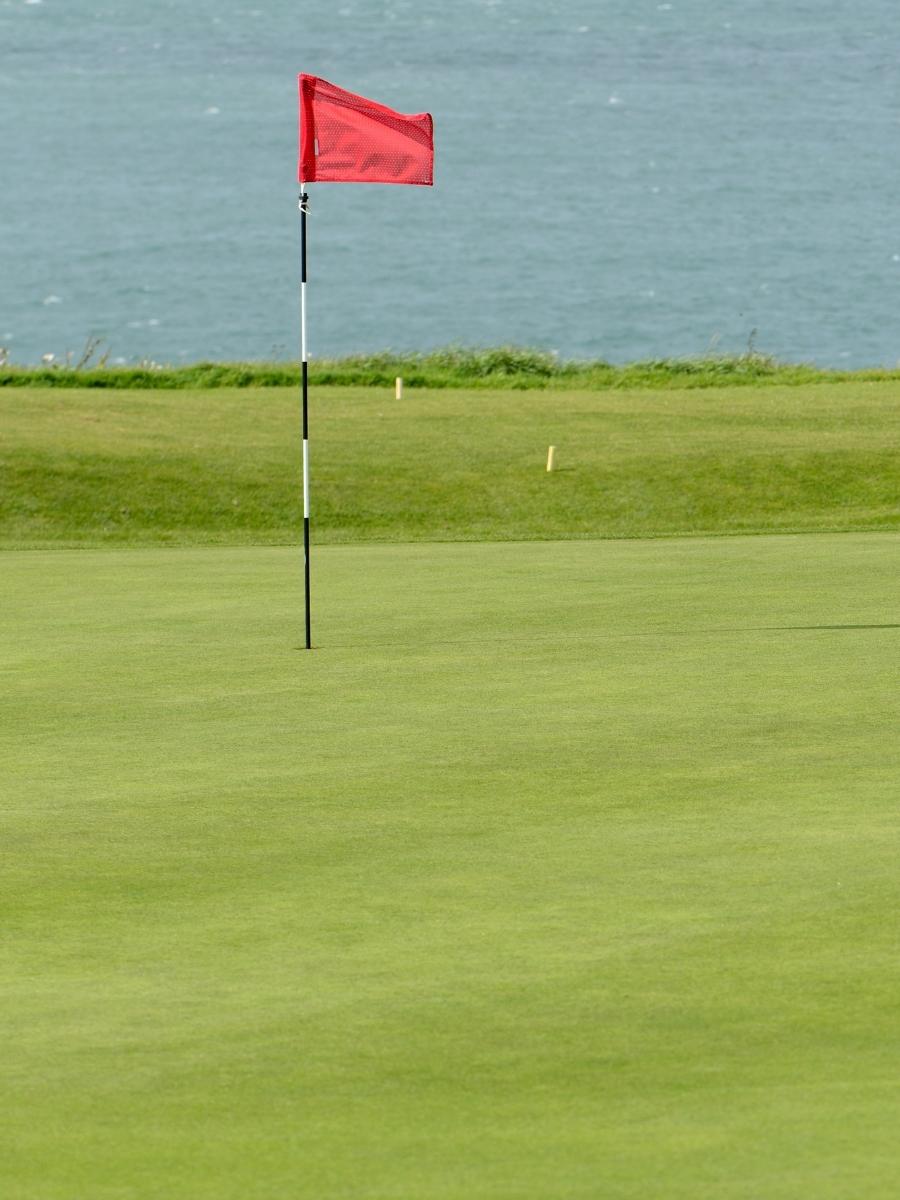What Is The Green In Golf?
The ‘green’ in golf can be a confusing term – considering how green the whole golf course usually is. However, this term refers explicitly to one feature of the golf course.
The putting green, often known as the green, is an area of grass on the golf course on the relatively level, smooth ground surrounding the hole and flagpole. The green is very precisely mowed, allowing players to make precise strokes. There are several ways that players can read the green.
The green plays a critical role as players need to read it accurately to putt successfully. Understanding and reading the green is one way to help your ball reach its intended target, the hole.

So if you want to know all about the green in golf, you’ve come to the right place. Let’s begin!
The Green In Golf
While most golf courses are green, the green is narrower in technical terms. When professionals and casual golf players refer to the green, they refer to what the golf rules refer to as the putting green.
Essentially, the green is the area around each hole and flag, which is generally between 100 and 500 square meters. The putting area has an extremely smooth surface with grass that has been mowed down to the right level of evenness, allowing players to make accurate strokes on it.
The green is designed so that balls will easily roll over the ground here, and they can usually go for some distance. A golf club called a putter, which has a low loft, is used to make the shot, so the ball rolls into the hole.
The topology and form of the green can vary virtually endlessly, but for practical reasons, it is smoother than other parts of the course. However, slight slopes and humps will challenge players as they must account for these variations in their putting line.
The green is usually made of a thin carpet of grass, and although you can play golf in the rain, adverse weather does become a significant concern as flooded greens will mean the course will close!
During maintenance work to the green, temporary greens are usually made on the fairway just in front of the actual green by the greenkeeper. They allow social play to continue. But in terms of a golfers handicap, you can’t count the round.

Is The Green In Golf Made Of Real Grass?
Yes, the green on the golf course is entirely made of real grass, from the rough to the fairway spanning all the way up to the flagpole and hole itself. The green is also known as the carpet. A lot of work and skill goes into maintaining the green.
This is a specialized professional path mainly held by experts called ‘greenkeepers’ who serve a long apprenticeship. Once qualified, they are much sought after and can demand a high salary.
With the help of a staff team, the head greenkeeper will ensure that the green is watered as and when needed, sowed, mowed to perfection, and that weeding is done to keep the grass looking snazzy, among other things.
You may have noticed how costly and difficult it can be to keep the grass in your yard green, especially during winter. It is no different when it comes to the cost of installing and maintaining the greens.
Installation and maintenance is no joke, as it costs a pretty penny and accounts for a sizable amount of the upkeep cost of a golf course. Low-budget golf courses prefer sand greens to actual grass to save money, and some even use astroturf.
What Is Reading The Green In Golf?
Golfers adopt a technique known as “reading” the green to improve their odds of making a putt. Reading the green is not a simple method as it entails determining the grain, speed, inclination, tilt, and descent of the green along the putting line.
Most players do not putt strokes directly at the hole, but instead, they ensure that they account for the peculiarities of the green to arrive at the hole at the right angle and speed. Before hitting the ball, golfers usually read the green by strolling around it and examining its properties.
Related: How Often Do Golf Courses Move The Hole?
Many golfers consider reading the green and putting the most challenging aspect of the game. It is sometimes known as the ‘game within the game!’

How Do You Read The Green In Golf?
A few different techniques are used to read the green in golf. However, not all methods are used to read a single putt, as each technique is useful in different circumstances.
1. Read The Green Upon Approach
One of the first methods used to read the green before you even get to the green is to take a good look at the surrounding terrain. Although the putting green may look flat, you will notice that it slopes the same way as the land around it if you look carefully.
2. Examine The Green From Behind The Putt
The next step is to examine the green. Get behind your ball and look at the flag. By doing this, you will judge how the putting green slopes known as the ‘brake’ for your specific putt.
3. Use Your Feet To Feel The Green
Another method is using your feet to feel the green. Walk slowly along the side of the putting line and let your feet feel the slope so you can determine whether the slope is uphill, downhill, or sideways.
4. Learn To Read The Grain
An effective technique is reading the grain of the putting green. Depending on the climate, the grass of the green grows in specific directions, usually towards the sunset or water. The direction that the grass grows will also affect how the ball rolls.
If you notice the green has silvery or shiny grass, it is usually fast. However, if the grass is darker, it is slower. And you should adjust the speed of your put accordingly.
Also, after heavy rainfall or in wintertime, there is usually less ‘brake,’ allowing the golfers to put more directly at the hole.
Final Thoughts
Now that you know what the green is (and how to read it), you better understand one of the most important features of the golf course.
And being able to make fewer putts per round will make a big difference to your score. Many amateur players spend hours at the driving range hammering 250-yard drives and never practice putting which is a big mistake.
Many professionals say, ‘driving for show, putting for dough!’






